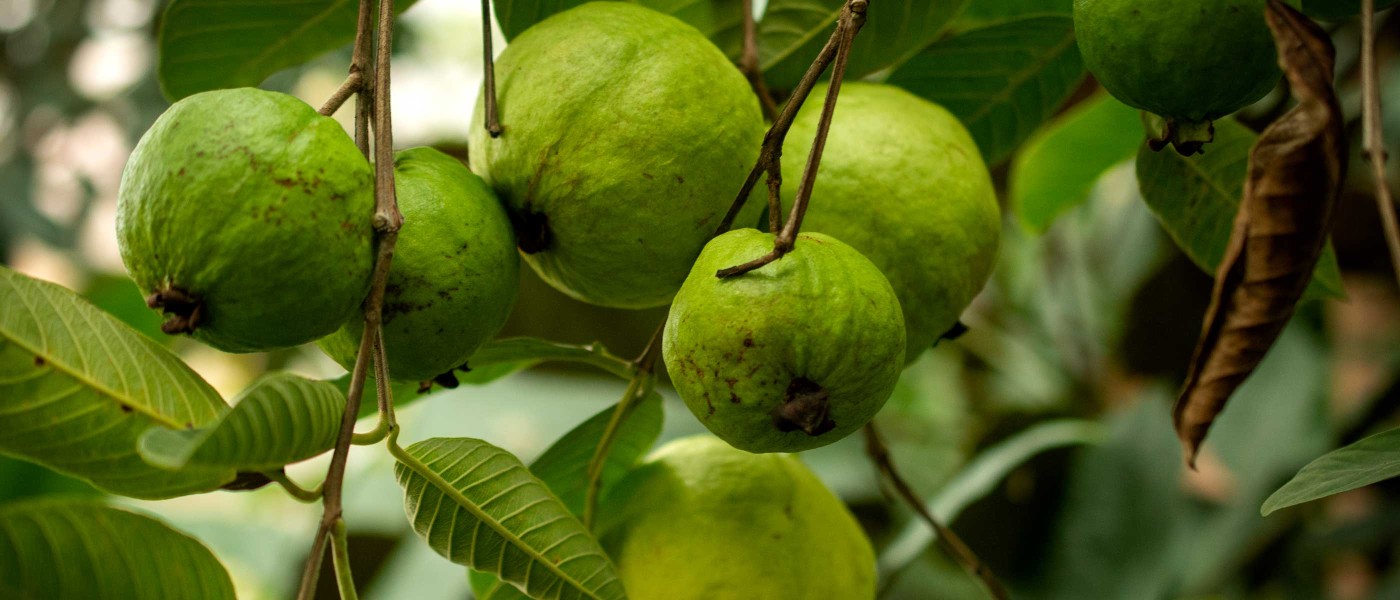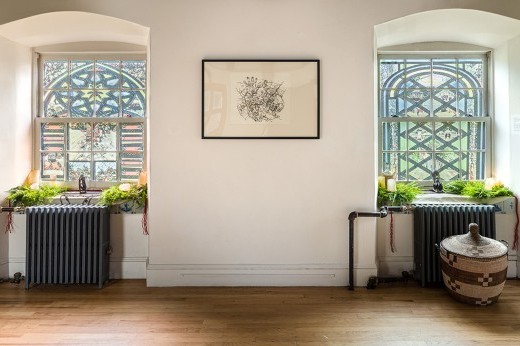In February, Brooklyn Botanic Garden opened its Trees of Little Caribbean exhibit in the Steinhardt Conservatory. Expanding on last year’s Plants of Little Caribbean in the Discovery Garden, which highlighted important culinary plants that grow in the region, the trees exhibit highlights 25 plants—some true trees, some not—along with histories, recipes, and local businesses that link them to Brooklyn’s Little Caribbean neighborhood.
Trees of Little Caribbean was curated by Chelsea Forgenie, school workshops coordinator at the Garden, and Meera Jagroop, director of youth programs. Jagroop’s parents are originally from Guyana, while Forgenie grew up near the Garden in Flatbush after she and her family emigrated from Trinidad. For immigrants, Forgenie says, encountering a plant from home that you connect to emotionally can be a grounding experience. “There’s a sense of feeling seen,” she says.
Forgenie notices this often when school groups come to the Garden to learn about plants. She recalls seeing students walk through the Conservatory, encounter a familiar leaf or bloom, and say, “Wait, wait, wait, I know that plant!”
Trees of Little Caribbean was developed in partnership with I AM caribBEING, a Brooklyn-based organization that works at the intersection of Caribbean culture, community, and commerce.
“New York City is home to a very large and diverse Caribbean community,” says Shelley Worrell, founder of I AM caribBEING. In 2017, Worrell led a push for the official naming of Little Caribbean, which encompasses parts of Crown Heights, Prospect-Lefferts Gardens, and Flatbush.
“I think it’s important to celebrate our culture and heritage, and for other people to be able to participate in our culture and heritage,” says Worrell. “And there’s no better way than through food.” Worrell, whose parents are from Trinidad, paired up with her mother and aunt to write Caribbean-inspired recipes—like cassava dumplings, tamarind balls, and soursop punch—as an online component of this exhibit.
While researching plant histories, Jagroop and Forgenie dove into a wide range of sources, reaching beyond traditional Western narratives. The popular cookbook Provisions: The Roots of Caribbean Cooking, by Jamaican chefs Michelle and Suzanne Rousseau, proved particularly inspiring, along with other reference points like a children’s guide to Jamaican trees from the Jamaica Horticultural Society.
The history of plants, Jagroop and Forgenie emphasize, is tightly woven into legacies of violent exploitation and colonization.
“Many of the plants in this exhibit were brought to the Caribbean as cheap food for people enslaved by European colonizers,” says Jagroop. Simultaneously, the plants are entwined with stories of rebellion, resilience, spirituality, and joy. “Today those plants have become staples in Caribbean food, and are both celebrated and delicious, because you have folks who elevated and uplifted them.”
People might think of plants as being removed from politics. “But they come with a lot of history,” says Forgenie. “They come with living—with all the things involved in living.”



